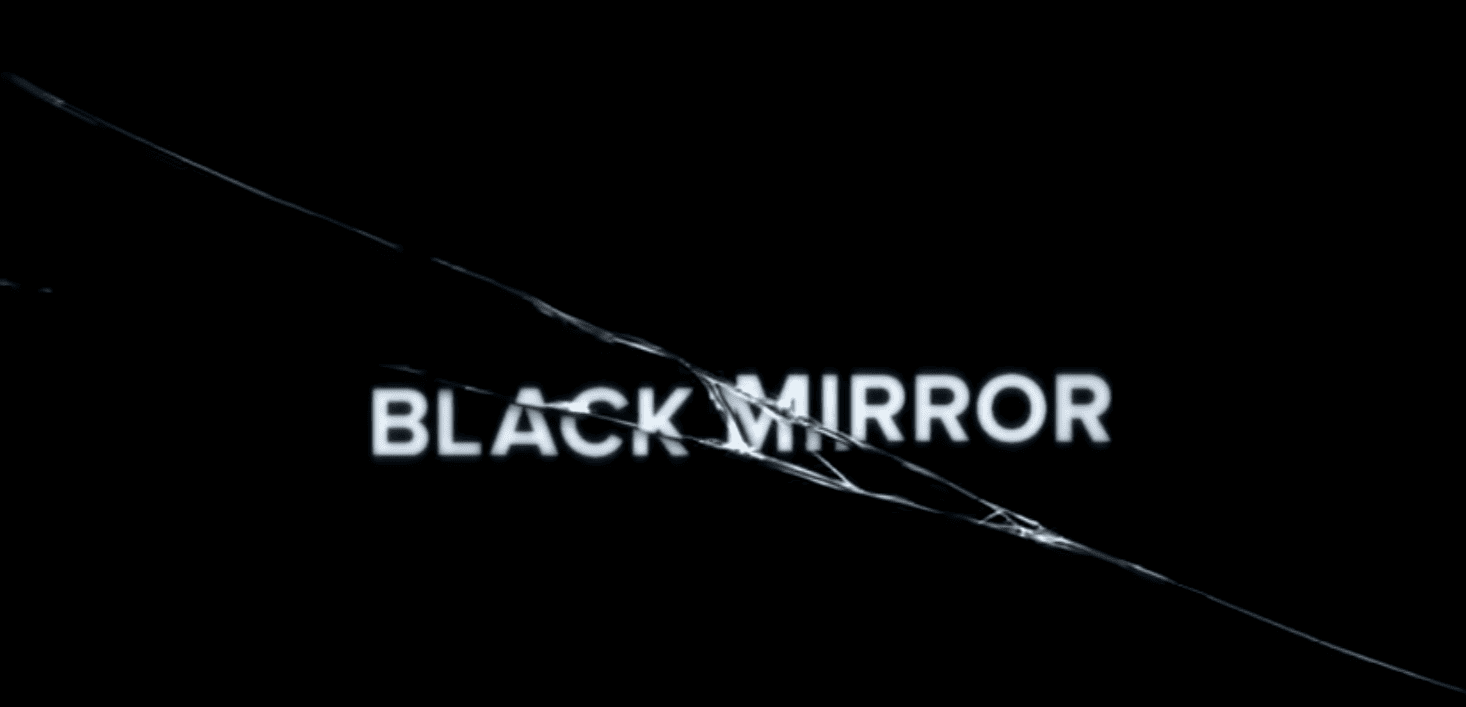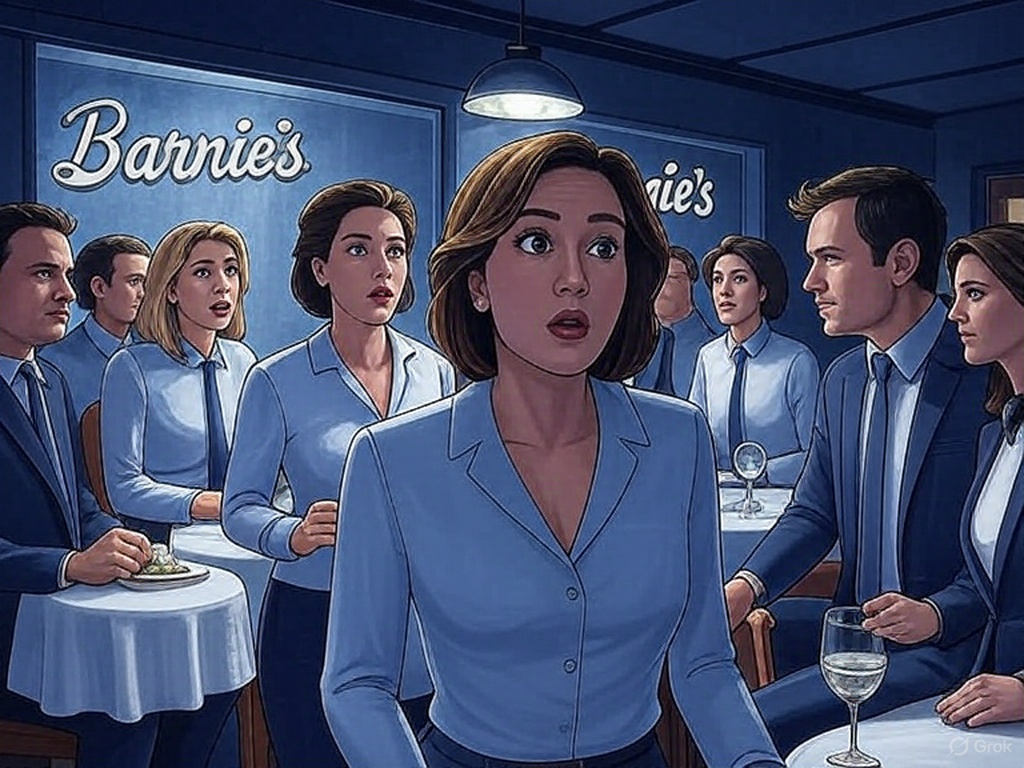In a twist straight out of Black Mirror’s dystopian playbook, Netflix has pulled off what might be the most audacious psychological experiment in TV history.
The streaming giant quietly released two distinct versions of the latest Black Mirror episode, “Bête Noire,” and fans are losing their minds as they uncover the truth. If you thought you knew what gaslighting felt like, Netflix just turned the dial to eleven.
 Picture this: you’re catching up with a friend about the gripping new episode, only to realize you’re not on the same page—literally. In “Bête Noire,” the protagonist, a sharp-witted woman navigating a high-stakes corporate world, gets into a heated argument with colleagues over the name of a restaurant central to the plot: is it Barnie’s or Bernie’s? For some viewers, the episode confirms Bernie’s as the correct name, with the narrative leaning into her vindication.
Picture this: you’re catching up with a friend about the gripping new episode, only to realize you’re not on the same page—literally. In “Bête Noire,” the protagonist, a sharp-witted woman navigating a high-stakes corporate world, gets into a heated argument with colleagues over the name of a restaurant central to the plot: is it Barnie’s or Bernie’s? For some viewers, the episode confirms Bernie’s as the correct name, with the narrative leaning into her vindication.
For others, Barnie’s is indisputably correct, framing her as delusional for insisting otherwise. Same episode title, same actors, same core story—but with a subtle, reality-warping divergence that’s driving fans to question their own perceptions.
Also read:
- Spotter’s Creator Con: Redefining Media with YouTube’s Biggest Stars
- Patreon Levels Up with Native Live Streaming, Doubling Down on Social Network Features
The discovery exploded across social media, with X posts lighting up as viewers compared notes. “I swear it was Bernie’s, but my sister says Barnie’s? Did we watch the same show?” one user posted, echoing a sentiment shared by thousands. Another wrote, “Netflix is out here gaslighting us like we’re IN Black Mirror. This is next-level.” The hashtag #BeteNoireGate is trending as fans dissect every frame, hunting for clues about which version they saw and why.
 Netflix has yet to officially confirm the stunt, but insiders suggest this was a deliberate move to mirror the episode’s themes of doubt, manipulation, and fractured reality. By serving different versions to different viewers — likely based on algorithms analyzing user data—the platform has engineered a real-world parallel to the protagonist’s unraveling sense of truth.
Netflix has yet to officially confirm the stunt, but insiders suggest this was a deliberate move to mirror the episode’s themes of doubt, manipulation, and fractured reality. By serving different versions to different viewers — likely based on algorithms analyzing user data—the platform has engineered a real-world parallel to the protagonist’s unraveling sense of truth.
It’s a marketing masterstroke that transforms passive viewing into an immersive, disorienting experience. As one X user put it, “Netflix didn’t just drop an episode; they dropped a social experiment.”
The scale of this gambit is unprecedented. While Black Mirror has toyed with interactivity before (think Bandersnatch), this marks the first time Netflix has covertly manipulated narrative outcomes across its global audience without warning. Early estimates suggest millions have watched “Bête Noire” since its release last week, with roughly half served each version.
The split has sparked heated debates, with some fans praising the bold creativity and others feeling betrayed by the lack of transparency. “I love Black Mirror, but I didn’t sign up to be a lab rat,” one Reddit thread complained.
 Industry experts are calling it a game-changer. “This isn’t just storytelling; it’s psychological warfare,” says media analyst Dr. Sarah Lin. “Netflix has weaponized its platform to blur the line between fiction and reality, making viewers question their own experiences. It’s brilliant, but it’s also a gamble—trust is hard to rebuild once you’ve toyed with it.”
Industry experts are calling it a game-changer. “This isn’t just storytelling; it’s psychological warfare,” says media analyst Dr. Sarah Lin. “Netflix has weaponized its platform to blur the line between fiction and reality, making viewers question their own experiences. It’s brilliant, but it’s also a gamble—trust is hard to rebuild once you’ve toyed with it.”
For now, fans are left piecing together the puzzle. Some are rewatching the episode, hoping to spot Easter eggs or glitching into the “other” version. Others are flooding Netflix’s customer service with questions, only to be met with cryptic responses. One thing’s clear: “Bête Noire” has transcended the screen, turning a single episode into a cultural phenomenon that’s as unsettling as it is unforgettable.
So, which version did you watch—Barnie’s or Bernie’s? Better check with a friend. You might not like what you find.






